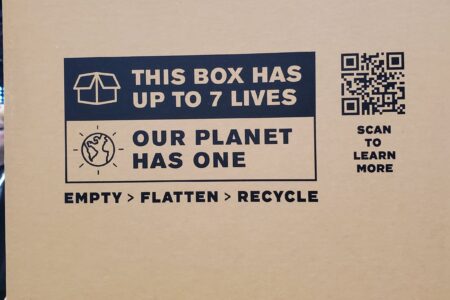Certifying regenerative agriculture

illy stand at Taste of London. Image: Kathryn Brand
Last year, illy released a new coffee blend that is sourced 100% from regenerative agriculture, and certified by Regenagri, a third party certification programme for regenerative agriculture claims. I recently met up with Franco Costantini, founder of Regeangri, at illy’s stand at the Taste of London festival, to discuss what this certification means for illy, but also for the industry as a whole.
Seated on deck chairs around the back of the lively illy stand, to the backdrop of the loud music and bustling festival – and plied by illy’s zero waste soft serve ice cream and espresso martinis – I quizzed Franco on the importance and significance of regenerative agriculture and its certification.
Franco explained that illy is the first brand with the complete certification, meaning that all the steps throughout the company’s supply chain are audited and certified. Not only is illy’s Brasile Arabica Selection Coffee Regenagri certified, but so is the company itself. Therefore, any other coffee illy sells that comes from Regnagri certified farms, via a certified producer, is also covered.
When certifying farms, Regenagri looks at the full set of criteria, whether that be soil health; reduction in use of water and energy; biodiversity; use of fertilisers; intercropping; or conservation efforts. They are all measured and assessed and scored against, said Franco. Farms or businesses need a Regenagri score of 65 per cent to achieve the certification. “We look at the whole picture. Consider it like a puzzle, where each of the components has weight, and each of the components is measured and verified for improvement, and everything together gives the final result of the Regenagri certification,” said Franco. He added that, crucially, the programme requires improvement every year: “you cannot be certified Regenagri and let things stay,” he said, and this is what drives the impact of the certification.
This improvement is crucial and needs to be tangible. If a company does not improve, Regenagri requires it to submit an improvement plan to shape their strategy. Franco explains that they don’t want to immediately cut companies out that haven’t improved, because farming is more complicated than that. If improvement is not seen in the first year, they have to submit an improvement plan, which is verified the following year. If they are still not able to achieve results, they cannot stay in the programme and remain Regenagri certified. “I think it is a fair balance between helping them and giving them some urgency as well,” commented Marco.
And there is urgency for these changes, especially in coffee. “There is strong power from both sides [consumer and company] to engage with the farmers and with the suppliers, and to reward them for their efforts to do better farming, and then also the power towards consumers to convey the right message,” said Franco. He added that consumers are getting increasingly aware and knowledgeable about sustainable farming and the environment, but they need to be much more informed about regenerative farming. Brands that take on the Regenagri certification and display it on their products are part of this consumer education.
Each company that is working towards or has achieved a Regenagri certification will have entirely context specific plans. What this means, Franco explained, is that each of the criteria is assessed based on the specific context, which region, which climatic area, the type of soil where they are farming. Different areas will have different needs and priorities and the Regenagri plan can be adjusted accordingly.
I then asked about whether the new EU Deforestation Regulations (EUDR) is expected to impact Regenagri’s work in any way, or if it’s being welcomed with open arms. Franco responded that “the eligibility criteria of the Regenagri standard for farms has always included the checks to see if the applicant has been involved in deforestation or conservation; it’s been there since the beginning …, so basically the EUDR is embedded into the original standard.”
While regenerative agriculture practices are recommended to all kinds of farming, Franco explained that there is special potential in coffee. “In this case in Brazil, the reductions of carbon footprint for coffee is actually nearly double what is achieved in other arable crops.” He added that “in Brazil, I think there are approximately 50,000 hectares of farms that are certified. If you put them all together, in one year they have essentially reduced [the equivalent of] ten per cent of the carbon footprint of London.” When companies first start on their regenerative agriculture journey, there is huge room for improvement, then as they improve “the curve flattens a bit,” but the impact is great.
It is all moving in the right direction, companies and farms just need to be educated and motivated to make the change. When I asked whether Franco thought that governments should be doing more to incentivise and perhaps subsidise regenerative agriculture transitions, Franco commented, “I’m not always in favour of subsidising something; I’m more of a believer of letting the system create value by itself. Subsidising usually means creating a bubble,” he said, emphasising it is more important for a true economic system to be developed to support the regenerative supply chain, where value and impact is recognised.
Hopefully, going forward, we will see many more companies being certified by Regenagri, especially in coffee and tea where there is huge potential, as well as already existing practices that champion regenerative agriculture. Steps like this by the big coffee and tea organisations are essential at this stage to safeguard our industry.
- Kathryn Brand, associate editor, Tea & Coffee Trade Journal.
Keep in touch via email: [email protected] Twitter: @TCTradeJournal or LinkedIn: Tea & Coffee Trade Journal



